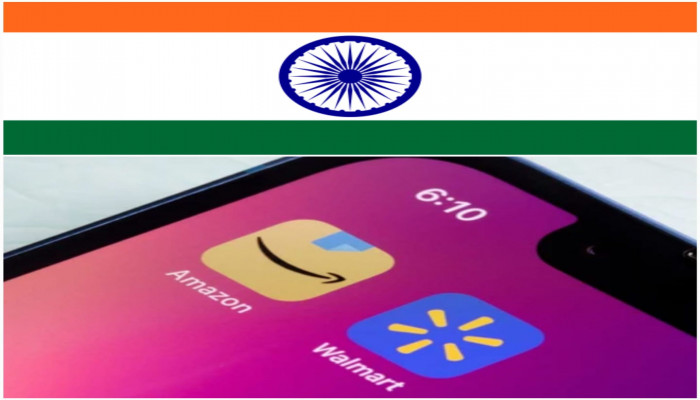India faces growing tariff pressure as U.S. pushes for Amazon and Walmart’s Flipkart to gain unrestricted market access
- In Reports
- 05:00 PM, Apr 23, 2025
- Myind Staff
The Trump administration aims to pressure India to allow online retailers like Amazon and Walmart complete access to its $125 billion e-commerce market as part of a trade deal currently being negotiated, with the threat of higher tariffs hanging over the discussions. Industry leaders, lobbyists, and US government officials say that the US is set to urge Prime Minister Narendra Modi’s government to ensure fair competition in e-commerce during broad negotiations for a US-India trade agreement, which will also cover sectors such as food and automobiles.
On Monday, U.S. Vice President JD Vance met with Modi in New Delhi, where both leaders "welcomed the significant progress in the negotiations for a mutually beneficial" trade agreement, as stated by the Indian government. They also acknowledged the "continued efforts towards enhancing co-operation in energy, defence, strategic technologies and other areas."
India is facing a 26% tariff on its exports to the US unless an agreement is reached. President Donald Trump had temporarily suspended this measure for 90 days to allow for negotiations. Jeff Bezos, the CEO of Amazon, was involved in Trump’s inauguration in January, while Walmart's chief, Doug McMillon, met with Trump at Mar-a-Lago before the event. McMillon and other major US retailers were also at the White House recently to discuss tariffs with the president. A source, who wished to remain anonymous, shared that McMillon raised the issue of India's restrictions on foreign e-commerce companies during the Mar-a-Lago meeting. Flipkart, the Indian online retailer, is owned by Walmart.
The U.S. is pushing to open up India’s retail market, setting up a clash between global giants like Jeff Bezos and Doug McMillon and Asia’s wealthiest man, Mukesh Ambani, whose Reliance group is the most significant retail player in India and runs multiple e-commerce platforms. In India, American e-commerce companies can only act as online marketplaces, letting others sell their products. In contrast, Indian companies can make, own, and directly sell their products on their platforms. The U.S. sees these rules and restrictions on foreign investment in retail as unfair trade practices or “non-tariff barriers.”
Arvind Singhal, chair of the retail consulting firm Technopak Advisors, said, “Since 2006, the US has been trying to open up India’s domestic market, and has been stymied successfully ever since.”
Besides restrictions on holding inventory in India, U.S. retailers have also had to deal with frequent product inspections by the Bureau of Indian Standards, according to industry insiders who spoke anonymously due to the delicate nature of the trade discussions. Two executives told the Financial Times that during the Trump administration, U.S. officials were working closely with American e-commerce companies as part of the negotiation efforts. The White House, along with Amazon, Walmart, and Reliance, declined to comment on the matter.
Praveen Khandelwal, secretary-general of the Confederation of All India Traders and a Member of Parliament from Modi’s Bharatiya Janata Party, said, “The attempt to pressure India into opening its ecommerce sector wider for American giants like Amazon and Walmart reflects a broader pattern of economic diplomacy aimed at securing market dominance for its corporations.” He further stated, “While foreign investment is welcome, it must not come at the cost of distorting India’s retail ecosystem or undermining the interests of its [90mn] small traders.”
Donald Trump has criticised India’s trade policies, calling it the “tariff king” because of its high import duties. Despite this, the U.S. remains India’s biggest trading partner, and both countries have expressed a desire to increase their two-way trade in goods and services to $500 billion, more than twice what it currently is. Amazon entered the Indian market in 2013 and has been expanding gradually. However, it still trails behind Flipkart. By the end of last year, Amazon had under 40 million daily active users in India, while Flipkart had around 50 million, according to analysts at Bank of America.







Comments